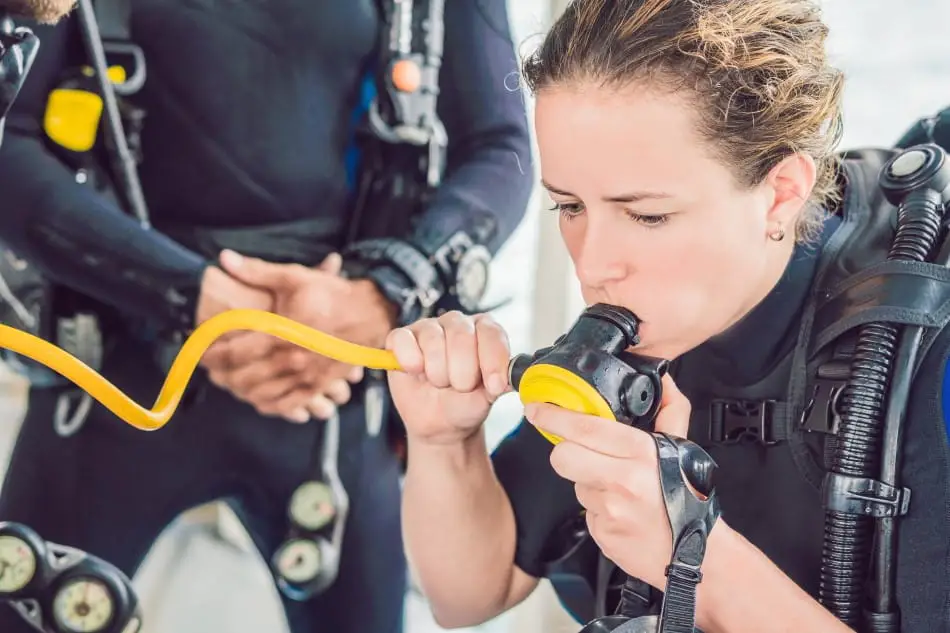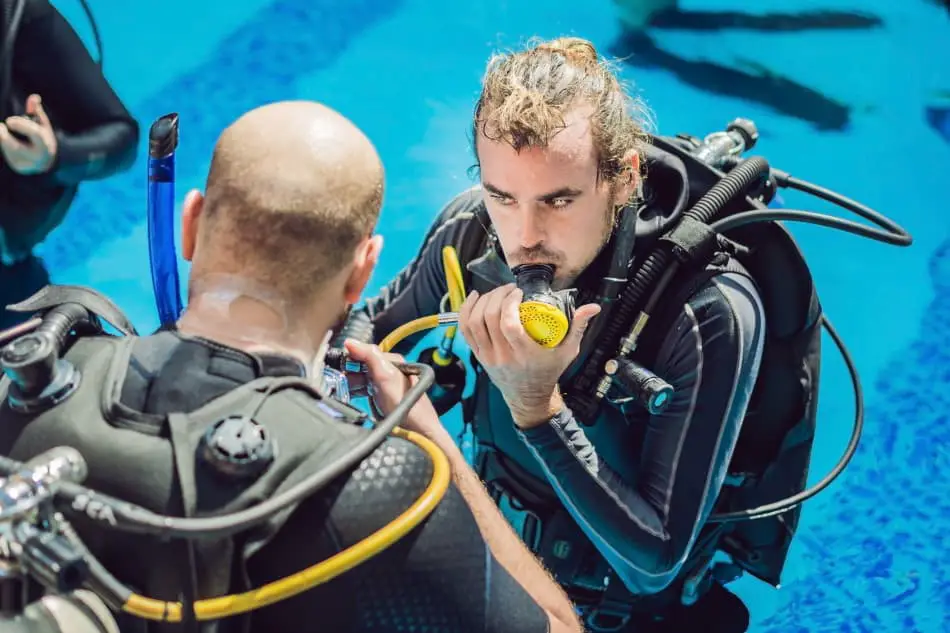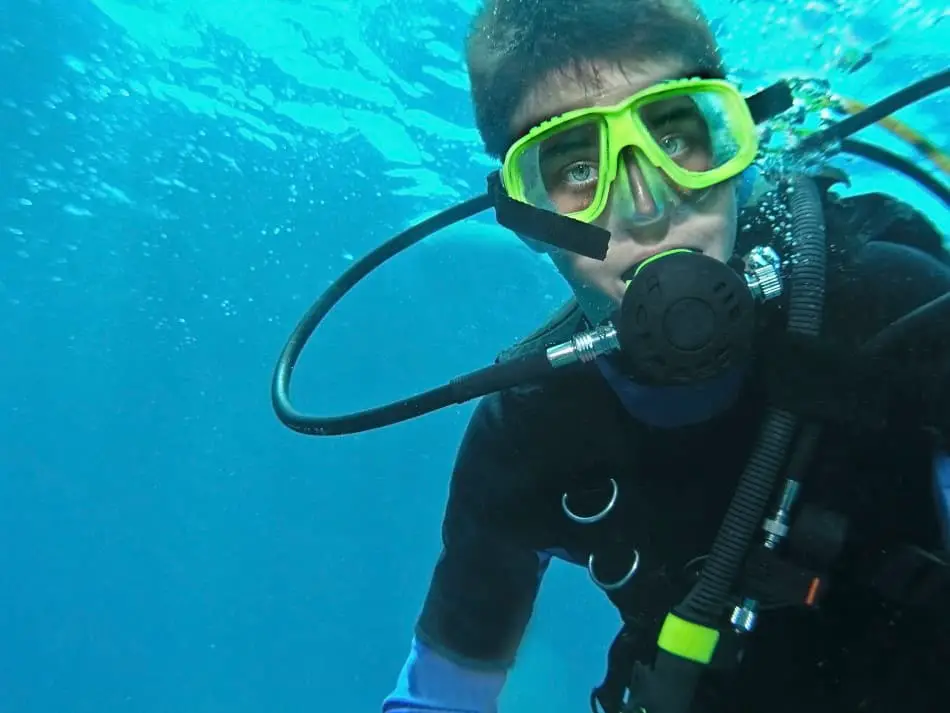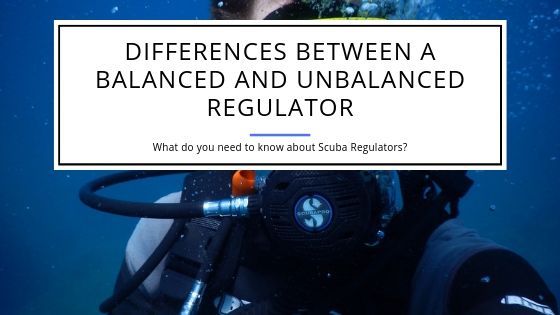What is the Difference between a Balanced and Unbalanced Regulator?
A dive regulator makes it possible for scuba divers to breathe underwater. It delivers air from your scuba tank to you in such a way that after a few dives, breathing underwater starts feeling almost as natural as breathing on land.
When you’re looking into regulators though, you find different types of them. First, you find DIN and Yoke models but then you also read about balanced vs unbalanced regulators. We’ll answer your questions about those differences in this article!
The Core Features of a Dive Regulator
No matter what sort of a dive regulator you have, they will all have these basic features:
- The first stage – it attaches to your scuba tank’s valve, reduces the tank’s air pressure to intermediate pressure and routes the air through several hoses. There are typically connections for high and low pressure that you can use to connect to different pieces of gear.
- The second stage – this is the mouthpiece that you breathe from. It is also known as a demand valve since it supplies you with air whenever you inhale at the right pressure so that you don’t have any breathing difficulties.
- The alternate air source – this is a spare mouthpiece, also known as an octopus (What Kinds of Scuba Octopus Regulators are There?), that can be used to help out a fellow diver in need of help. Sometimes, this part may be built in your inflator or the BCD.
- The low-pressure BCD inflator – this is connected to the first stage by means of a low-pressure hose.
- Submersible pressure gauge (SPG) – this is connected to the first stage through a high-pressure port and is used to gauge how much air pressure is still left in your tank.

Balanced vs. Unbalanced Regulator
Before we look at the differences between a balanced and unbalanced regulator is, let’s look at what each of them actually is:
What is a Balanced Regulator?
Basically, a balanced regulator allows the diver to put in consistent breathing effort, regardless of a change in tank pressure. In other words, the first and second stages of the tank are always balanced.
What are the Upsides & Downsides of a Balanced Regulator?
The Pros
- Balanced first stages supply air at constant pressure, regardless of whether you have a full tank at 3000 psi or a nearly empty tank at 500 psi. This ensures that even if the tank has almost run out, a diver will be able to breathe comfortably until the tank is completely empty.
- Balanced second stages have a lighter spring to keep the valve closed since the air force is doing most of the work. Since the spring pressure is low on the second stage, balanced regulators don’t have to be serviced as frequently as unbalanced regulators.
The Cons
- Comfortable breathing comes with a price. Balanced regulators are significantly more expensive than the unbalanced ones. Add to that the maintenance cost, and the balanced regulator can become a bit too costly for many divers.
- Since you’re breathing the same way, whether the tank is empty or full, it is difficult to tell when you’re running out of air. In some cases, this might mean that you have to make an emergency ascent or you may run out of air before you return to the surface.
- Balanced regulators tend to be a bit more sensitive than unbalanced ones and have higher chances of breaking if they suffer from a high impact blow.
What is an Unbalanced Regulator?
With an unbalanced regulator, you will have to put in more effort to breathe as the pressure in the air tank decreases.
What are the Pros & Cons of an Unbalanced Regulator?
The Pros
- It is always easy to tell when you’re running low on air since a reduced air supply in your scuba tank will require you to put in more physical effort to breathe normally underwater. This gives you enough time to plan your ascent.
- Unbalanced regulators are significantly cheaper than balanced ones and for this very reason, they are often the number one choice for divers on a budget.
- At depths of 20 meters or less, divers need to exert the same amount of effort to breathe through a balanced or an unbalanced regulator and the difference between the two is hardly noticeable.
The Cons
- As mentioned before, unbalanced regulators require greater physical exertion, which means you are likely to get tired faster and may even cut your dive short.

The Core Differences between a Balanced and Unbalanced Regulator
Now that we’ve covered the basics of what exactly balanced and unbalanced regulators are and what benefits each of them offers, let’s just summarize the core differences between the two:
The First Stage
The first stage for the diaphragm and piston of the regulator involves balancing tank pressure so that it does not impact the force required to keep the valve of the first stage shut. This amount of force determines something known as Intermediate Pressure (IP).
In unbalanced regulators, in the first stage, the air from the tank exerts a greater force on the valve to keep it shut. As the air pressure in the tank reduces, this force on the valve is reduced as the tank pressure is getting lower.
It is important to remember that in the first stage, the air pressure in the second chamber is meant to build up until it reaches the IP and automatically shuts the valve to cut off the air coming from the tank. In essence, the lower the force to close the valve, the lower the required IP, which is definitely an advantage for balanced first stage regulators.
The diaphragm first stage is balanced for both types of regulators.
The Second Stage
Second stages have a spring-operated valve that stays shut until a diver needs to inhale. IP from the first stage pushes against the spring to open the valve. In balanced regulators, the second stage makes use of a little bit of IP air to “fight against” the pressure of the first stage.
In a balanced second stage, the spring to keep the valve closed is much lighter because the IP is helping to keep it shut. As the air pressure decreases, the force fighting against the valve also decreases so the overall pressure on the valve remains unchanged, even if the tank is nearly empty.
Unbalanced second stages have a much heavier spring, so as the IP decreases, it is harder for the valve to open and you must exert more physical effort to breathe.
The Price
As we discussed before, balanced regulators are pricier, but they offer the benefit of being able to breathe comfortably, which is why they are the preferred choice for professional divers.
When Should You opt for a Balanced Regulator?
Although both balanced and unbalanced regulators can be used for deep dives, balanced regulators have the advantage of making it easier for you to breathe, regardless of how close you are to finishing your air supply and how high or low your tank pressure is.
They are ideal for professional divers such as those who wish to record their dive, go cave-diving, or explore shipwrecks since they need to conserve as much energy as possible.
When Should You Pick an Unbalanced Regulator?
Although balanced regulators have a number of benefits, the unbalanced ones can be quite useful for recreational scuba diving.
There is also something known as having an “overbalanced” regulator. In these regulators, the IP increases with increasing depth. It ensures consistent breathing through the second stage when you’re scuba diving to deep depths.
For recreational scuba divers that typically don’t perform real deep dives, it is often better to opt for unbalanced regulators. They are not only cheaper but are also great for divers since it is quite obvious when the air supply is diminishing.
Best Scuba Regulators for Cold Water – Buying Guide and Reviews

So Which Regulator is Best for You?
A question that is sometimes raised is why are all regulators not balanced? One factor is the cost involved. The structure of the balanced regulator is more complex and a little more delicate than that of the unbalanced regulator, which raises the price.
Another factor is that a balanced regulator is not always the best choice for a dive. For beginners and shallow divers, unbalanced regulators are actually easier to use.
Some divers use a mix of both: a balanced first stage combined with an unbalanced second stage provides the best of both worlds. Not only is it pocket-friendly, but it also helps divers know when they’re running out of air.
The overall difference in the performance of both regulators is very minor, and most frequently divers make their decision based on their budget. Both balanced vs unbalanced regulators are safe to use and for recreational divers, the differences are typically minimal if at all discernable.

